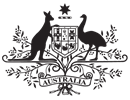The Marriage Amendment (Celebrant Registration Charge) Bill 2014 and the Marriage Amendment (Celebrant Administration and Fees) Bill 2014 are bills which reflect the implementation of a 2011-12 budget decision of the Gillard Labor government to introduce cost recovery for Commonwealth registered marriage celebrants in Australia.
The member for Kooyong, in his second reading speech on these bills, rightly acknowledged that a couple's wedding day is one of the most important moments in their lives, and it is important that Australians can expect those tasked with solemnising marriages to discharge their responsibilities to a very high standard. I endorse the comments made by the member for Kooyong in the second reading speech. But this bill, it should be noted, concerns civil celebrants, and perhaps it could be added that celebrants in particular are an essential feature of many modern weddings.
Civil celebrants provide marrying couples with a meaningful alternative to a registry office wedding. The Marriage Celebrant Program was established under the Marriage Act in 1973 by the great modernising Whitlam Labor government. The program was one of many achievements of the reforming Labor Attorney-General Lionel Murphy. Despite vociferous opposition to the idea of civil celebrants from conservative quarters, including from some parliamentary and party members within Labor, Lionel Murphy exercised his powers as Attorney-General under the Marriage Act to appoint the first civil celebrant in July 1973. One recent account of that event holds that, frustrated with opposition to the idea, Lionel Murphy returned to his office late one night and typed the first letter of appointment himself. He posted it from a nearby postbox to Lois D'Arcy, a 25-year-old Queenslander. Lois D'Arcy was a great success as a marriage celebrant, and in the following months Lionel Murphy appointed many others to this role.
The importance of the program and the number of celebrants have significantly increased as many people move away from traditional religious marriage ceremonies. Recent Australian Bureau of Statistics figures show that in 2011 some 71 per cent of marriages were formalised by a celebrant. So common are marriages by celebrants that since 1973 I think most, if not perhaps all, Australians would have attended at least one ceremony performed by a civil celebrant. And the fact that a majority of marriages are now performed by civil celebrants tells us about the popularity of the measure introduced by Lionel Murphy in 1973. At the same time, not unexpectedly because of the steadily increasing popularity of civil celebrants to solemnise marriages, there has been an increase in the number of those celebrants. This was noted by the member for Kooyong in his second reading speech, where he pointed out:
The number of marriage celebrants has increased significantly in recent years from 3,334 in September 2003 to over 10,400 Commonwealth-registered marriage celebrants administered by the program
by the officials in the Attorney-General's Department
in 2014
Following on the long tradition of Labor's support for celebrants, the Gillard government developed these bills to ensure the ongoing integrity of the celebrant program and to make the administration of the program by the Attorney-General's Department financially sustainable. These are cost recovery charges that are being introduced. The government - that is, the previous Labor government - undertook an extensive consultation process and prepared stakeholders for the introduction of these changes.
It is somewhat saddening to see that, consistent with the approach that this government has taken to everything done by the former Labor government, the member for Kooyong could not bring himself to acknowledge that this very legislation was introduced in this parliament in March 2013. Indeed, he failed to acknowledge that I delivered a second reading speech, as Attorney-General, on this very legislation on the anniversary - that is, 20 March 2013 - of the day on which the member for Kooyong delivered his second reading speech - that is, 20 March 2014. I am pleased to see the member for Kooyong following - literally - in my footsteps to such an extent that we see in the second reading speech that I delivered on 20 March 2013 the sentence:
We all know that a couple's wedding day is one of the most important moments in their lives.
Happily, the member for Kooyong agrees. He said:
A couple's wedding day is one of the most special and enduring moments in their lives.
And equally as I said last year in my second reading speech on this very legislation:
the great majority of marriage celebrants perform this role to a very high standard.
Strangely the same phrase appears in the member for Kooyong's speech:
the great majority of marriage celebrants perform this role to a very high standard.
The fees introduced are a $600 registration fee for aspiring marriage celebrants, a $240 annual celebrant registration charge imposed on all Commonwealth-registered celebrants, and a $30 processing fee for seeking an exemption from the annual celebrant registration charge - those of course being the exact fees contained in the bill I introduced to the parliament last year.
It is good to see the Abbott government continuing to implement these Labor reforms. With this particular prudent addition to the regulatory framework, which is the same as that introduced by the Labor government last year, I commend the bill to the House.



